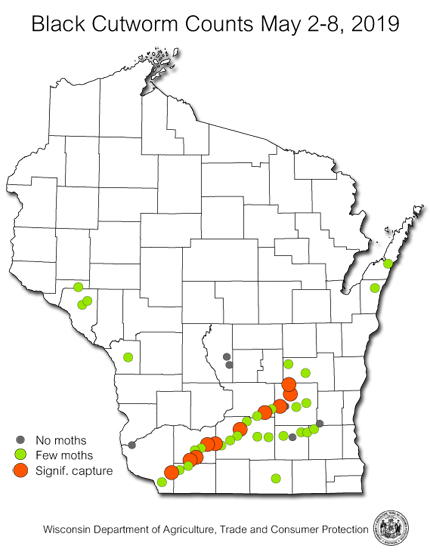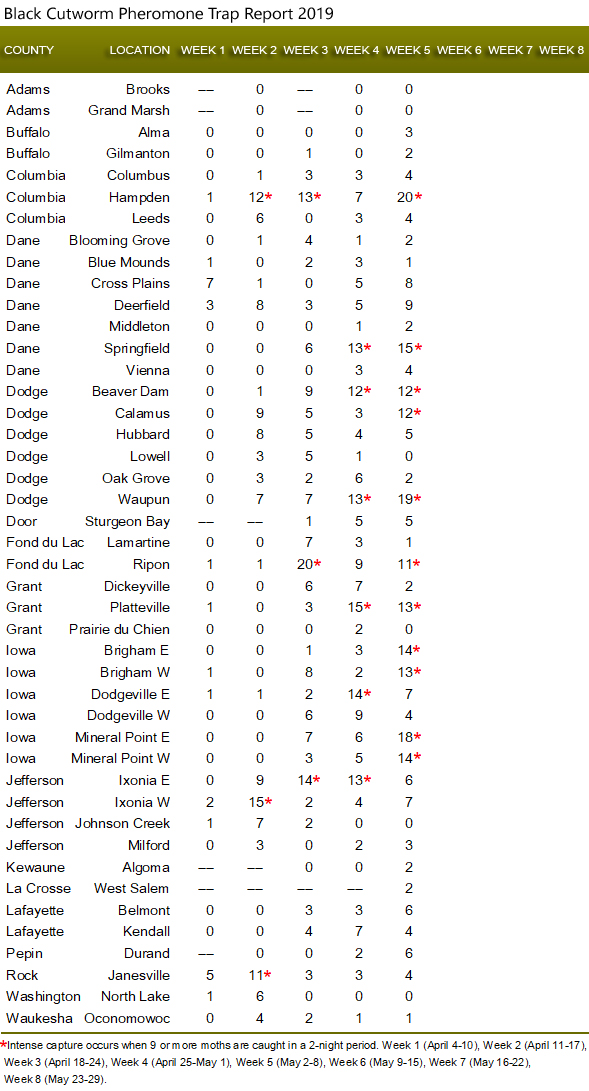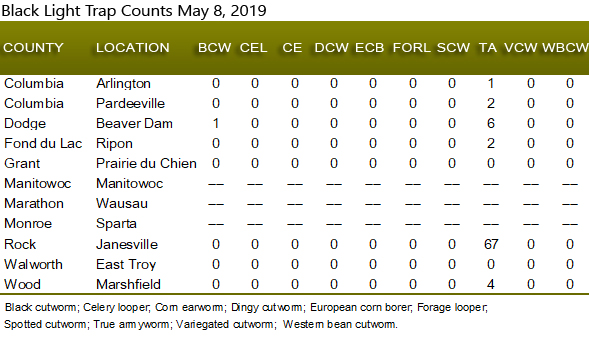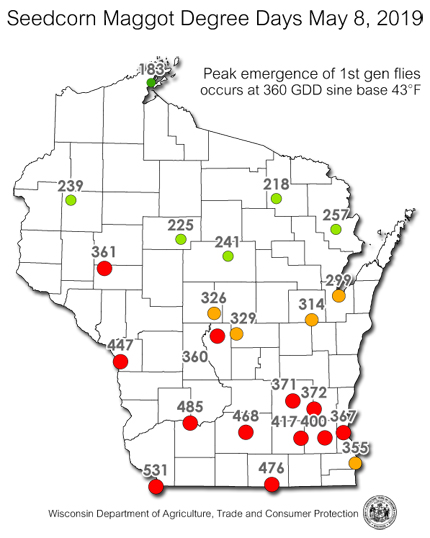
 |
|
|
Corn
Volume 64 Number 2 Date 05/09/2019 BLACK CUTWORM - A weekend storm front on May 5-6 brought additional flights of black cutworms northward into the state. DATCP's 44 monitoring locations collected 267 moths, with 10 sites registering significant counts of nine or more moths in two nights. The highest trap count for the week was 20 moths near Hampden in Columbia County. Pheromone traps have captured a cumulative total of 758 specimens since the first moth appeared on April 4. The black cutworm counts recorded this spring are considered moderate in comparison to captures in high-moth years, though delayed spring field preparation and early-season weed growth have provided highly favorable egg laying habitat for female moths arriving over the past 4-5 weeks. Based on the April 12 first significant capture or biofix, the peak corn cutting window is forecast to open in Rock County on May 27. However, the second wave of significant captures recorded in the past week signals the cutting period could be protracted, with a second peak damage period starting around June 6. SEEDCORN MAGGOT - Emergence of first-generation flies from overwintered pupae has peaked across the southern and west-central areas of the state with the accumulation of 360 degree days (sine base 39F). Peak emergence is expected to occur next week from Green Bay to Osseo and northward. Heavy egg laying is likely during this time, increasing the risk of maggot damage to susceptible crops such as corn and soybean seeds and seedlings. Planting as close as possible to the 'fly-free' period between the first and second generations can reduce risk and is the primary cultural control for this spring soil insect pest. -- Krista Hamilton, DATCP Entomologist 





|
|
|